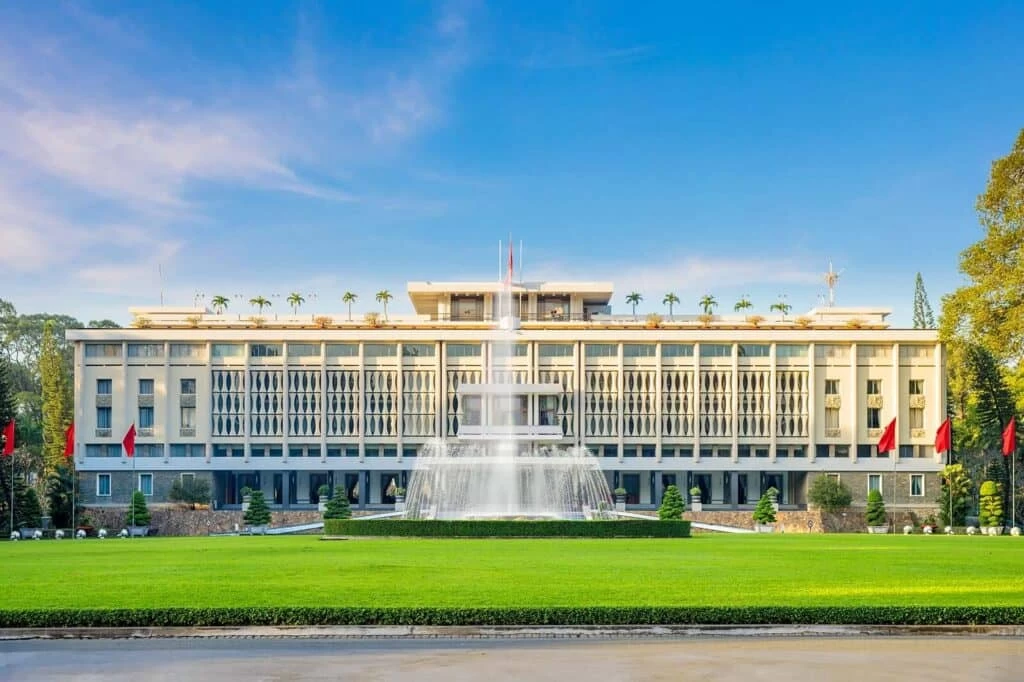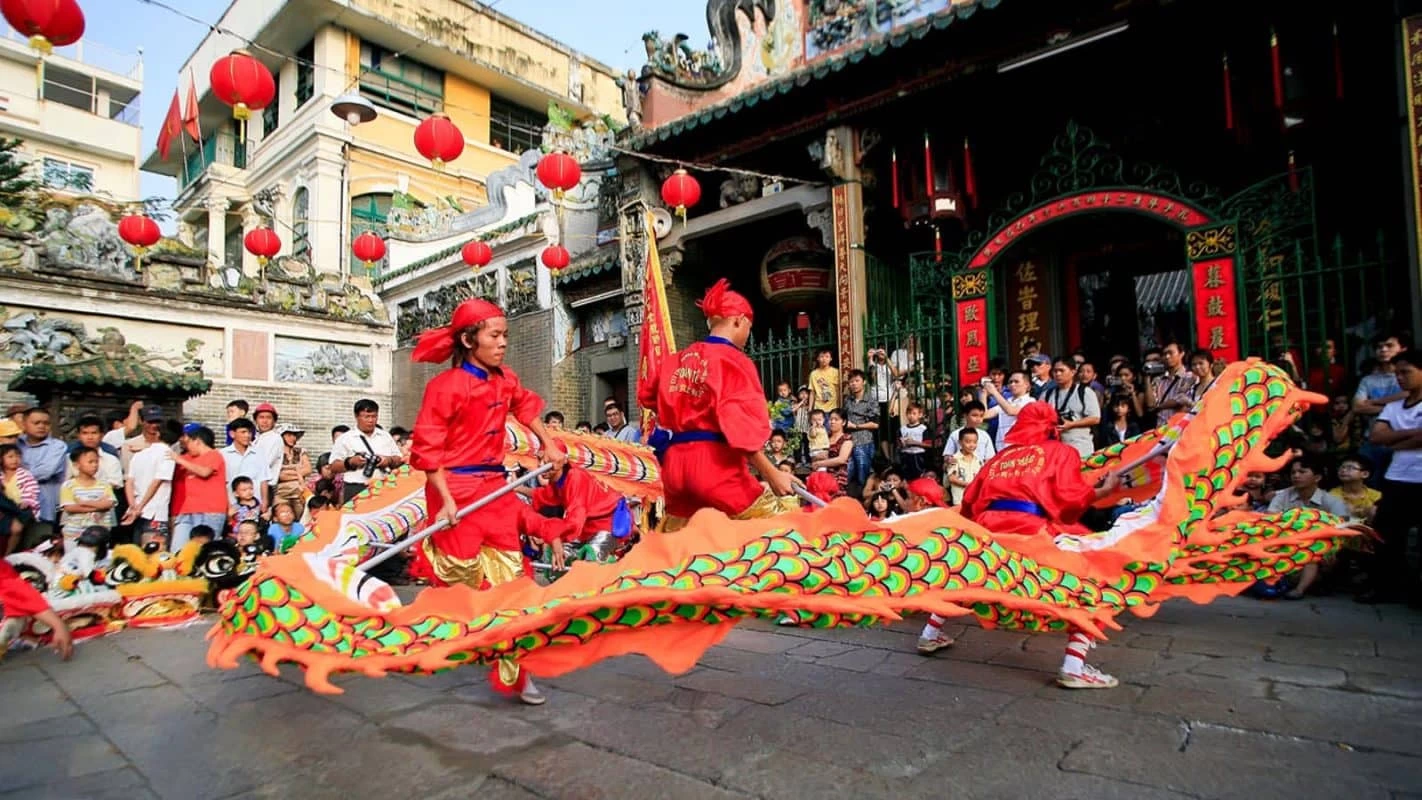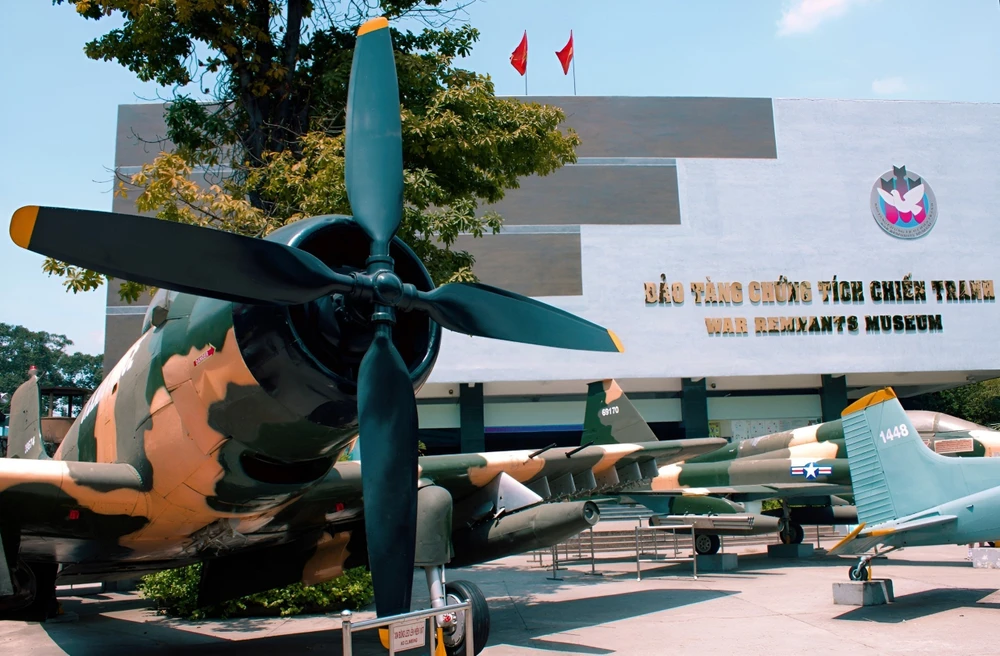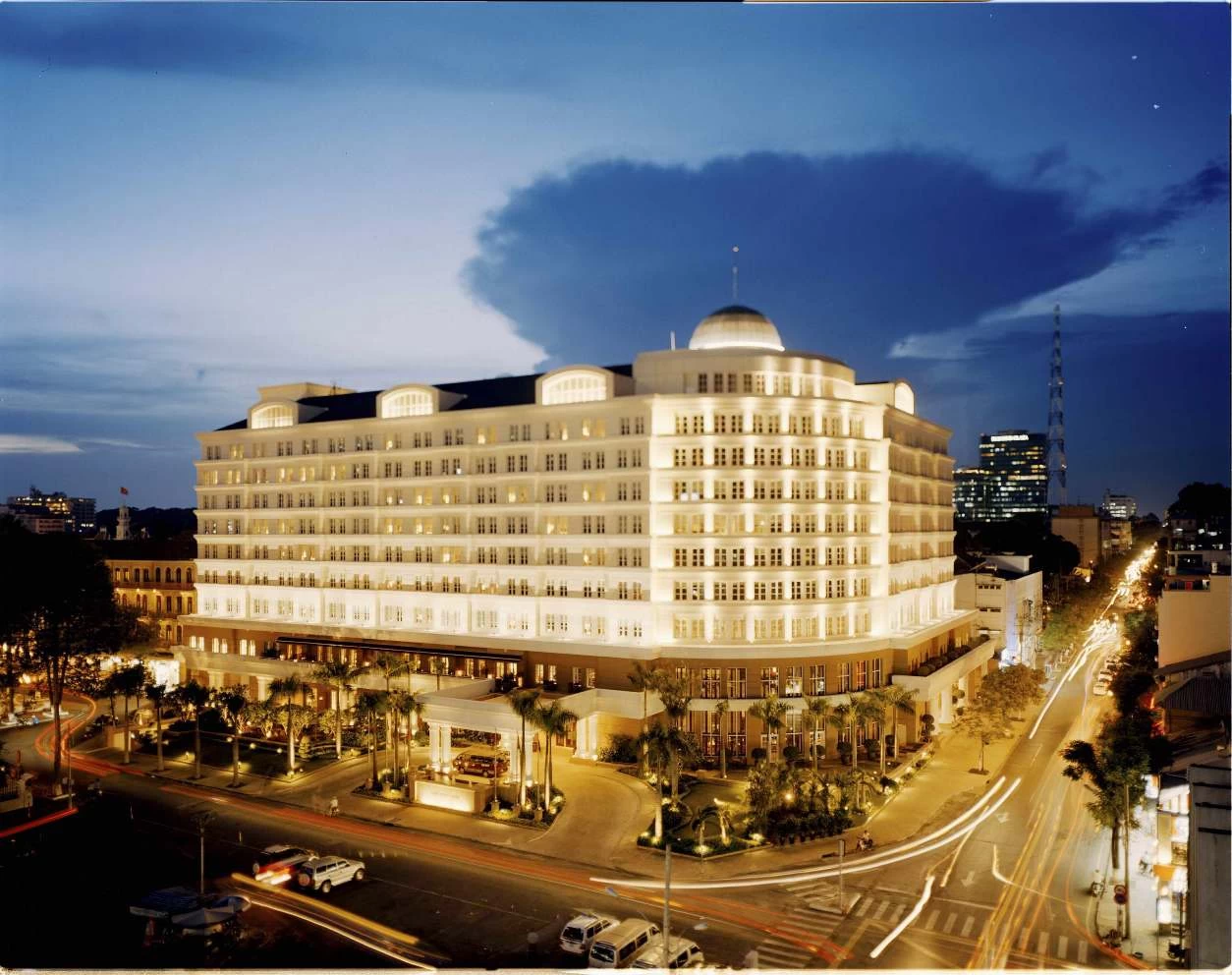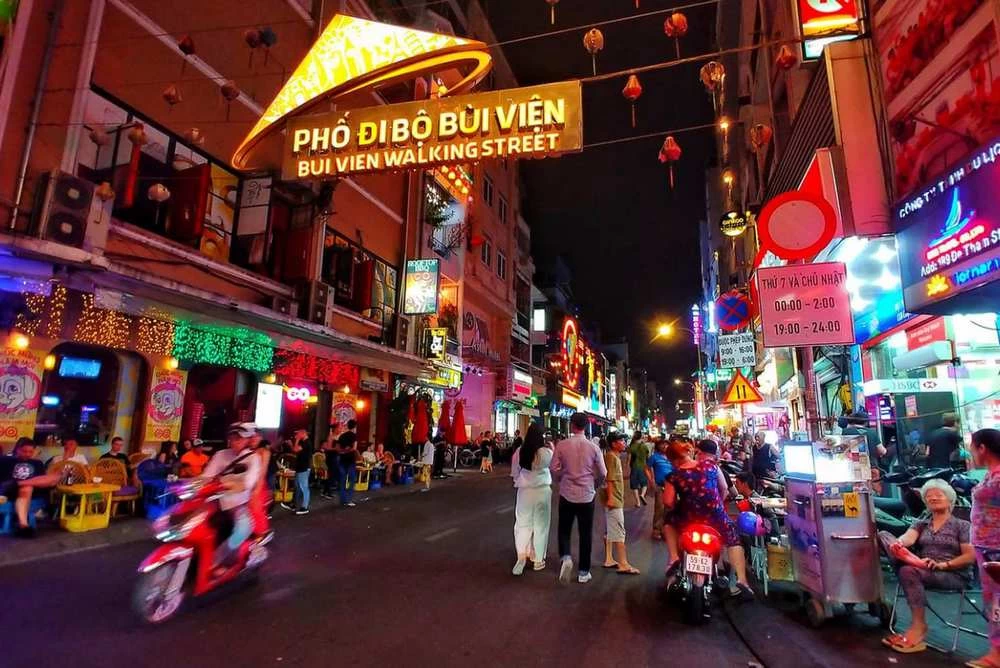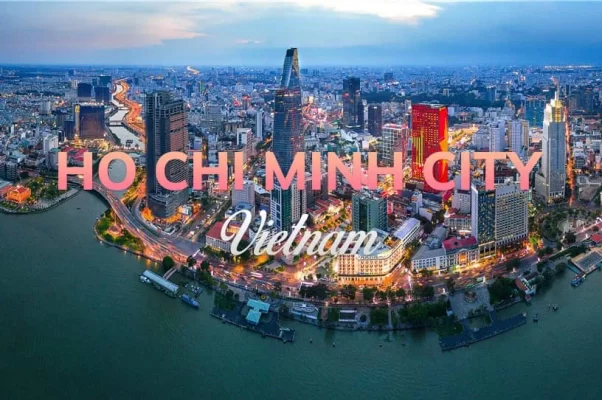
Let’s explore the most vibrant city in Vietnam!
Check out the best things to do in Ho Chi Minh City! Explore iconic landmarks like the Reunification Palace, dive into local culture at Ben Thanh Market, and indulge in street food favorites like Pho and Banh Mi. Whether you’re into history, nightlife, or day trips to the Mekong Delta and Cu Chi Tunnels, this vibrant Vietnamese city offers a unique blend of traditional charm and modern experiences. Find out how to make the most of your visit with Ula Travel’s tips on attractions, tours, and travel essentials.
I. Introduction to Ho Chi Minh City
1. Overview of Ho Chi Minh City
Ho Chi Minh City, formerly known as Saigon, is the largest and most dynamic metropolis in Vietnam. Located in the southern part of the country, it serves as a key economic hub and a gateway to the Mekong Delta region.
With a population of over 9 million people, the city is a bustling blend of modern skyscrapers, colonial-era architecture, and traditional markets, reflecting its deep historical roots and rapid development.
2. Why Ho Chi Minh City is a Must-Visit Destination
For international travelers, Ho Chi Minh City offers an intriguing mix of the old and the new. History buffs can explore significant sites such as the Reunification Palace and War Remnants Museum, which offer deep insights into the city’s role in the Vietnam War.
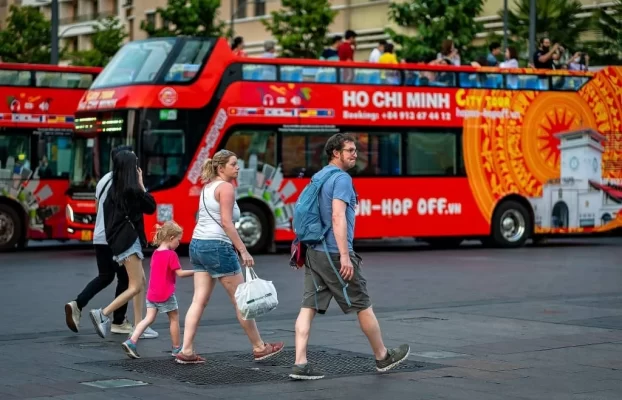
Ho Chi Minh City is an attractive destination for many international tourists.
The city is also famous for its culinary scene, where visitors can enjoy both street food like pho and banh mi, as well as fine dining options that fuse local and international flavors. Ho Chi Minh City’s vibrant nightlife—ranging from rooftop bars with panoramic views to bustling street markets—offers plenty of entertainment options for tourists.
Moreover, Ho Chi Minh City is an ideal base for exploring the surrounding regions. Day trips to the Cu Chi Tunnels, a remnant of the Vietnam War, or the Mekong Delta, where travelers can experience life along the river, provide unique cultural experiences.
II. Best Things to Do in Ho Chi Minh City
1. Explore Historical and Cultural Sites
a. Reunification Palace
The Reunification Palace, also known as Independence Palace, is a key historical site in Ho Chi Minh City, representing a significant chapter in Vietnam’s modern history. This building played a central role in the Vietnam War, serving as the home and workplace of the South Vietnamese president. The palace is most famously known for the events of April 30, 1975, when a North Vietnamese tank crashed through its gates, symbolizing the fall of Saigon and the end of the war.
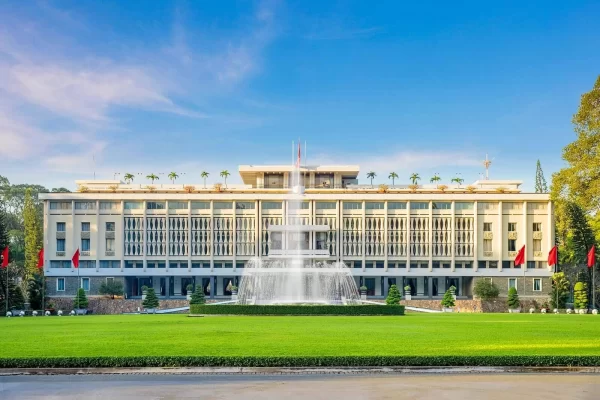
Reunification Palace
Visitors can explore the palace’s various rooms, from the president’s office to the war command center in the basement, equipped with 1960s telecommunications and tactical maps. The palace grounds are expansive, and the interior has been preserved with original furnishings, giving a glimpse into life during wartime Vietnam. Guided tours are available, offering deeper insights into the history of the building and its significance.
b. War Remnants Museum
The War Remnants Museum is a must-visit for those looking to understand the impact of the Vietnam War. The museum offers a sobering collection of exhibits that document the war’s brutalities from the Vietnamese perspective.
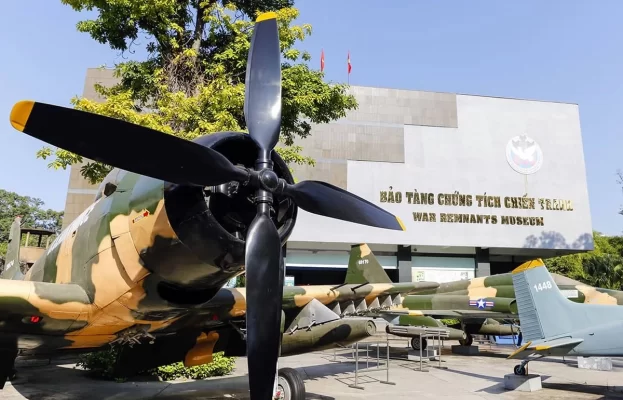
War Remnants Museum
Visitors will find photography, military equipment, and personal testimonies that highlight the horrors of war, including the devastating effects of Agent Orange and the My Lai Massacre.
The outdoor section of the museum displays a range of military vehicles, including helicopters, fighter jets, and tanks used by both sides during the conflict. Inside, the various floors are divided into themed rooms, focusing on different aspects of the war, such as the role of the press and war crimes committed during the conflict. While the museum can be emotionally intense, it serves as a powerful reminder of the importance of peace.
Are you looking for Ho Chi Minh City Tour?
c. Notre Dame Cathedral Saigon
One of the most iconic landmarks in Ho Chi Minh City, the Notre Dame Cathedral Saigon is an architectural gem that stands in the heart of the city. Built between 1877 and 1880 by French colonists, the cathedral features a Romanesque design with two distinctive bell towers that reach nearly 60 meters in height.
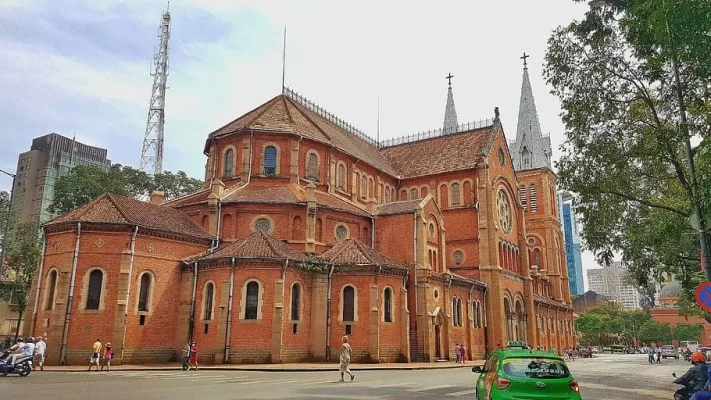
Notre Dame Cathedral Saigon
The red brick facade and stained-glass windows were imported from France, and the interior is equally impressive with its vaulted ceilings and marble altars. The cathedral continues to function as a place of worship for the local Catholic community, but it is also a popular spot for tourists looking to experience its serene beauty.
d. Saigon Central Post Office
Just across from the Notre-Dame Cathedral lies the Saigon Central Post Office, another stunning example of French colonial architecture. Designed by Gustave Eiffel, the famed architect behind the Eiffel Tower, the post office was constructed between 1886 and 1891.
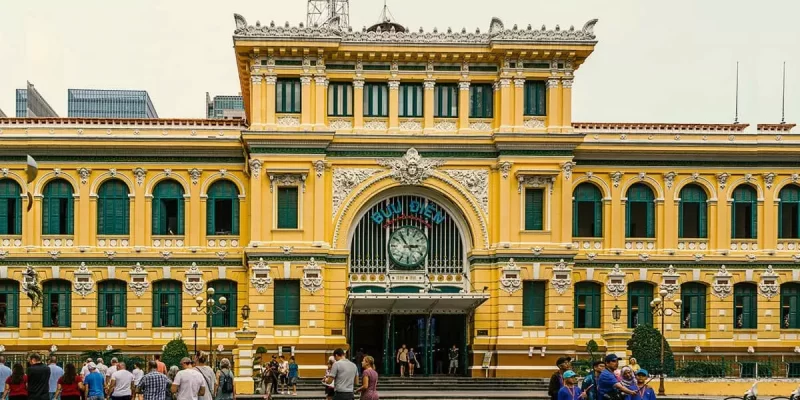
Saigon Central Post Office
It remains one of the city’s most beautiful and well-preserved colonial buildings. Inside, visitors are greeted with a spacious hall adorned with vintage maps and a portrait of Ho Chi Minh. The vaulted ceiling, intricate ironwork, and antique telephone booths transport visitors back in time.
Despite its historic charm, the post office is still fully operational, allowing visitors to send postcards and letters home while marveling at the architectural details. It’s a perfect stop for history buffs and architecture enthusiasts alike.
More details: Best of Southern Vietnam
2. Experience Local Markets and Shopping
a. Ben Thanh Market
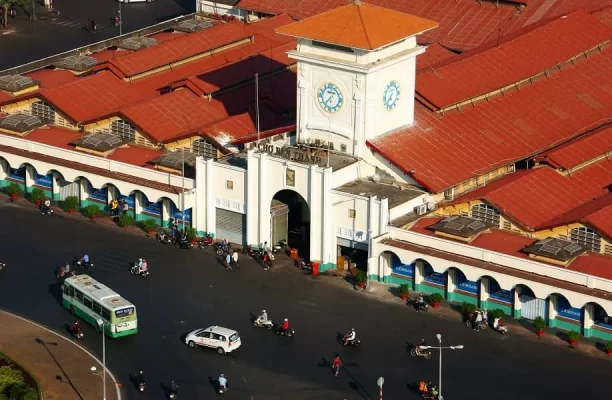
Ben Thanh Market
Ben Thanh Market is one of the most iconic traditional markets in Ho Chi Minh City and a must-visit for tourists seeking a local shopping experience. Located in the heart of District 1, this bustling marketplace offers a vibrant mix of everything from fresh produce and traditional handicrafts to souvenirs and textiles. The market is an ideal place to pick up unique gifts such as lacquerware, Vietnamese coffee, and hand-embroidered items.
One of the best parts of visiting Ben Thanh Market is the chance to bargain with vendors—a cultural experience in itself. Haggling is expected, so visitors should not hesitate to negotiate prices. It’s also a great spot to sample authentic Vietnamese street food. This combination of shopping and food makes Ben Thanh a true immersion into the local way of life.
You might be like: Shopping in Ho Chi Minh City – Best Spots to Explore
b. Binh Tay Market
Located in the historic Chinatown district (known as Chợ Lớn), Binh Tay Market offers a different experience compared to Ben Thanh, as it reflects the rich cultural heritage of the local Chinese-Vietnamese community. Built in the 1920s with distinct Chinese architectural influences, this market is known for its wide range of goods, from fresh produce and dried foods to household items and clothing.
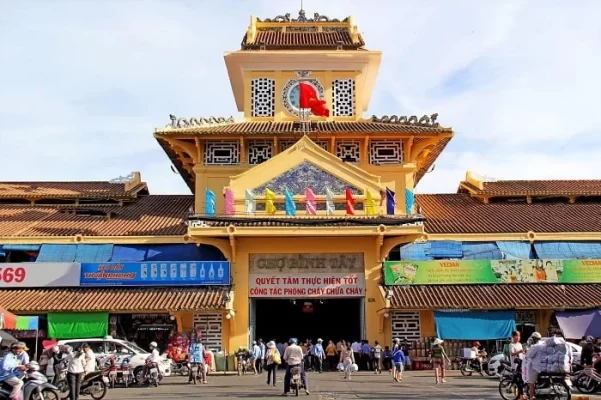
Binh Tay Market
Binh Tay Market is a great place to explore for those interested in local cuisine, especially Chinese-Vietnamese specialties. The market is famous for its wide variety of dried seafood, herbs, and spices. While Ben Thanh Market caters more to tourists, Binh Tay Market serves mainly locals, making it an authentic spot to observe everyday life in this vibrant community.
Click here: Chinatown in Ho Chi Minh City
3. Immerse in Local Food Culture
a. Enjoy Street Food
Ho Chi Minh City is a street food paradise, where vibrant flavors, fresh ingredients, and a rich culinary tradition come together. Whether you’re a seasoned foodie or just curious to try local cuisine, the city’s street food is an essential part of the experience.
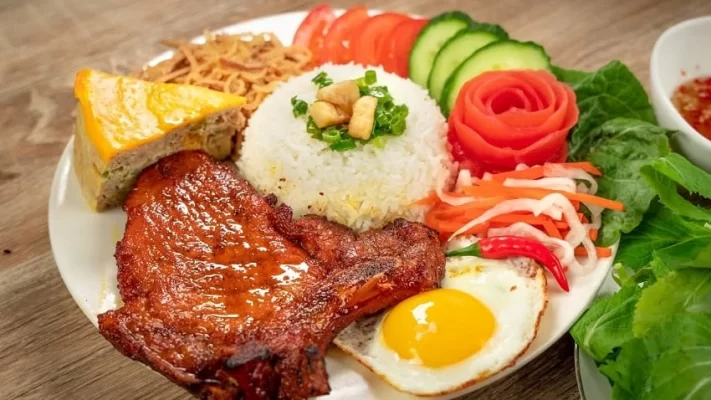
Broken Rice
- Bánh Mì: A French-Vietnamese fusion, Bánh Mì is a crispy baguette filled with a variety of meats (grilled pork, chicken, or pâté), fresh vegetables, and herbs, all topped with chili sauce or mayonnaise. It’s the perfect meal on the go, and each vendor has their own unique twist. Some stalls even offer vegetarian options or Bánh Mì stuffed with eggs.
- Fresh spring rolls, also known as summer rolls, are a light, refreshing option made with shrimp, pork, vermicelli noodles, and herbs wrapped in rice paper. Typically served with a side of peanut dipping sauce, fresh spring rolls offers a burst of freshness and texture in every bite. It’s a healthy yet satisfying snack, perfect for hot days.
- Com Tam: A popular dish among locals, Com Tam (broken rice) is a hearty meal of grilled pork chops served over broken rice grains, accompanied by pickled vegetables, a fried egg, and a side of fish sauce. This simple yet delicious dish is a must-try for any visitor looking to understand the daily life of Ho Chi Minh City’s residents.
For a truly immersive experience, consider joining a street food tour. These guided tours take you through bustling neighborhoods, showing you hidden food stalls that serve some of the best local dishes. You’ll have the chance to try a variety of foods while learning about their cultural significance and preparation.
Do not miss: Street food in Ho Chi Minh City
b. Nguyen Hue Walking Street
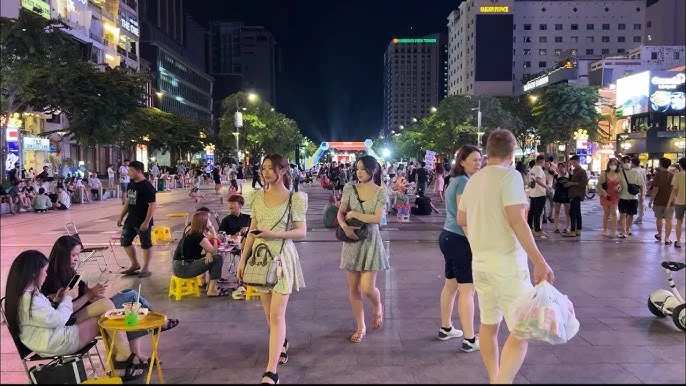
Nguyen Hue Walking Street
Nguyen Hue Walking Street is the heartbeat of Ho Chi Minh City’s modern nightlife and a great place to experience the local food culture. In the evenings, the street comes alive with crowds of both locals and tourists enjoying the vibrant atmosphere. Lined with coffee shops, street food vendors, and casual eateries, Nguyen Hue offers a diverse selection of snacks and drinks perfect for a leisurely evening stroll.
III. Day Trips from Ho Chi Minh City
1. Cu Chi Tunnels
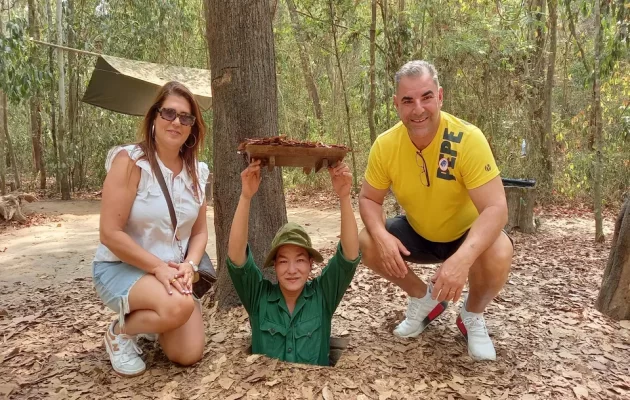
Cu Chi Tunnels
The Cu Chi Tunnels are a vast underground network of tunnels located just outside of Ho Chi Minh City, playing a crucial role in the Vietnam War. Stretching over 250 kilometers, this complex system was used by the Viet Cong soldiers as hiding spots, communication routes, supply routes, and even living quarters.
The tunnels enabled them to launch surprise attacks on enemy forces and evade aerial bombardments. Visitors today can explore a small section of these tunnels that have been widened for tourists while still preserving their authenticity.
What to Expect:
- Tunnel Exploration: You can crawl through sections of the tunnel to get a firsthand experience of what life was like for soldiers during the war. It’s a humbling experience that gives you a glimpse into the harsh conditions faced by those who lived underground.
- War Relics: The area also features historical displays such as war-time weapons, traps, and bunkers used during the war. These exhibits provide deeper insights into guerrilla warfare tactics.
- War Simulations: Some tours offer shooting ranges where visitors can try firing rifles, adding to the authentic wartime atmosphere.
- War-Time Meals: At the end of the visit, you can sample food that the soldiers ate, like cassava with salt, providing a unique connection to their daily hardships.
Visiting Cu Chi Tunnels offers a sobering but fascinating look into Vietnam’s wartime history and the resilience of its people. It’s a must-visit for anyone interested in understanding more about the Vietnam War from the local perspective.
Learn more about: Cu Chi Tunnels Half Day Tour
2. Mekong Delta Tour
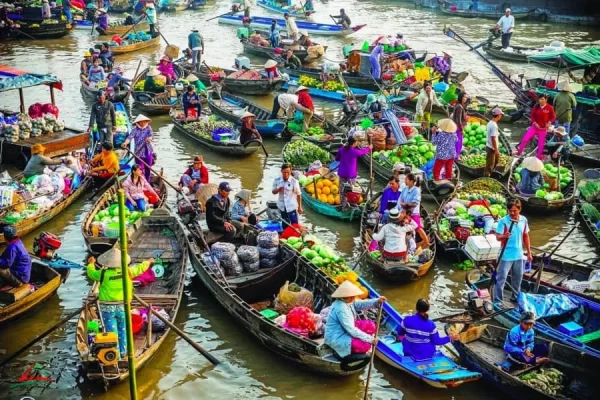
Floating market in Mekong Delta.
The Mekong Delta is often referred to as the “Rice Bowl of Vietnam” and is a lush, fertile region located southwest of Ho Chi Minh City. It’s an expansive network of rivers, swamps, and islands, home to unique floating markets, quaint villages, and traditional industries. Life here is centered around the water, making it a tranquil yet culturally rich destination for a day trip.
What to Expect:
- River Cruise: A trip to the Mekong Delta usually starts with a boat ride along the winding rivers. As you cruise through the intricate waterways, you’ll see stilted houses, rice paddies, and local fishermen going about their daily lives. Some tours offer a chance to paddle through smaller, more serene canals on traditional sampan boats.
- Floating Markets: One of the highlights is visiting a floating market, such as Cai Be or Cai Rang. Here, vendors sell fresh produce, tropical fruits, and other goods from their boats, creating a vibrant and colorful scene.
- Traditional Craft Villages: Along the tour, you can stop by villages that are famous for their traditional crafts. Many tours include a visit to a coconut candy workshop or a rice paper-making facility, where you can learn how these local specialties are produced and even try your hand at making them.
- Local Cuisine: The Mekong Delta is known for its fresh and flavorful cuisine. Many tours offer a traditional Vietnamese lunch featuring dishes like elephant ear fish, spring rolls, and tropical fruits.
- Orchard Visits: A visit to a fruit orchard is another common highlight, where you can sample tropical fruits such as dragon fruit, mango, and rambutan, straight from the source.
A day trip to the Mekong Delta provides a peaceful escape from the hustle and bustle of Ho Chi Minh City, offering a chance to experience Vietnam’s countryside life, rich traditions, and agricultural roots.
You might be like: Discover The Ho Chi Minh City to Mekong Delta Tour
IV. Ho Chi Minh City Nightlife
1. Rooftop Bars
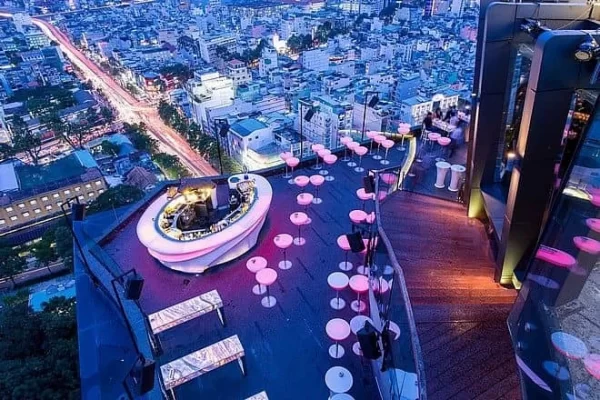
Chill Skybar
For those seeking a luxurious and vibrant nightlife experience in Ho Chi Minh City, rooftop bars are a must. These high-altitude venues offer breathtaking views of the city skyline, making them perfect for sipping cocktails while watching the sun set or enjoying the glittering city lights after dark. Popular spots like Chill Skybar and Saigon Saigon Rooftop Bar are particularly famous among international visitors.
2. Bui Vien Street
If you’re in search of a lively, more casual nightlife experience, Bui Vien Street in District 1 is the place to be. Often referred to as the “backpacker street” due to its popularity with international travelers, Bui Vien is a bustling hub of energy where the city truly comes alive after sunset. The street is packed with a wide array of bars, clubs, restaurants, and street vendors, offering everything from cheap drinks to delicious local street food.
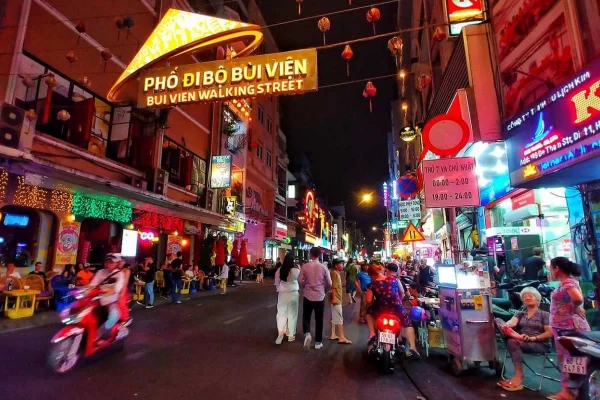
Bui Vien Street
As you stroll down Bui Vien Street, you’ll be greeted by the vibrant sounds of live music, laughter, and clinking glasses. The atmosphere here is electric, with bars offering a mix of local and international music, street performers entertaining passersby, and open-air seating that spills out onto the sidewalks. Whether you’re looking to grab a beer for less than a dollar or enjoy a cocktail at a trendy bar, Bui Vien has something for every budget and taste.
Bui Vien Street is also famous for its late-night food stalls, offering everything from banh mi to grilled skewers. This street truly encapsulates the heart of Ho Chi Minh City’s nightlife—loud, energetic, and full of life. Whether you’re there to party until dawn or just experience the local scene, Bui Vien is the epicenter of social activity for both locals and tourists.
In Conclusion, Ho Chi Minh City is a captivating destination that seamlessly blends historical landmarks, vibrant markets, and modern attractions. Whether exploring cultural sites, indulging in local street food, or experiencing the lively nightlife, the city offers something for every traveler. Its rich history, dynamic energy, and welcoming atmosphere make it an unforgettable stop on any Southeast Asia itinerary.
See more: Ho Chi Minh City Travel Tips




